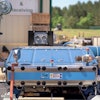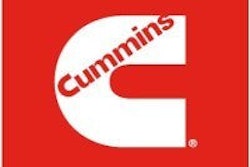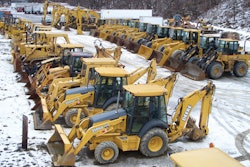By 2014, EPA Final Tier IV will call for particulate matter (PM) and nitrogen oxide (NOx) levels to be reduced by more than 90% from Tier III levels. To meet these stringent standards, engine manufacturers anticipate employing a combination of advanced engine technology and exhaust aftertreatment. Their more immediate concern, however, is meeting Interim standards. Although less stringent than the Final regulations, the standards are still impressive from a clean-air viewpoint, requiring major reductions in both PM and NOx.
For diesel engines above the 173-hp range, the deadline to meet Interim Tier IV is January 1, 2011; a year later for those between 75 and 173 hp. What are engine manufacturers doing to meet these Interim standards and how will these engines impact OEMs and the rental market? More specifically, will there be a significant change in cost, maintenance and performance of equipment powered by Interim Tier IV engines?
The technology
"To meet 2011 and 2012 Interim standards, most engine manufacturers are banking on two approaches," says Illinois-based engine consultant John Fischer. "They will likely take the Exhaust Gas Recirculation (EGR) path to reduce NOx. This technology essentially sends exhaust gas back into the engine where it works to lower heat and NOx production. A diesel particulate filter (DPF) will be added to control PM."
As Fischer points out, the above approaches will combine with other engine technology that evolved over the years, including the use of turbochargers, electronic fuel delivery and electronic controls. What most manufacturers will avoid, at least for the time being, is Selective Catalytic Reduction (SCR) technology that calls for injecting urea into the exhaust gas. This technology, although quite popular in Europe, is more cumbersome since it involves an external tank to store the fluid."
Announcements made by Cummins and John Deere support his conclusions. Both companies have indicated that their Interim Tier IV solution will include EGR and a particulate filter, along with proven engine technology enhancements. They both have also elected not to use a SCR system.
Equipment impact
In April 2009, Cummins announced four-cylinder engines that would join their six-cylinder counterparts in meeting EPA Interim Tier IV standards. Explains Hugh Foden, executive director, Cummins Off-Highway Business, "Our four-cylinder development program for Interim Tier IV was driven by the need to avoid the complexity of increasing displacement or overloading the engines with complications such as dual turbochargers. We have instead focused on minimizing the installation impact for our OEM customers with space-saving solutions such as the Cummins Direct Flow air filtration system, and we've scaled down the EGR and aftertreatment technology for these compact engines."
He went on to note that the particulate filter for these engines replaces the OEM muffler and that the direct-flow air filter represents up to 35% space savings compared to today's radial filter. "Cummins is deeply involved with our OEM partners with our internal machine integration process and testing of Tier IV engines and aftertreatment in off-highway equipment," adds Foden. "Pilot and field test equipment is being evaluated years in advance of the dates when EPA Tier IV regulations take effect. That is how we will continue to deliver products that meet the demands of our customers at the Tier IV emissions levels."
Still, as Geoff Stigler, manager of product marketing at John Deere Power Systems, points out, as more sophisticated emissions-control technologies are added to diesel engines, upfront planning by OEMs is more important than ever. "Engine manufacturers will need to integrate Interim Tier IV engines and aftertreatment into equipment designs. John Deere Power Systems and our distributors have increased resources dedicated to application integration reviews to ensure Interim Tier IV products are applied efficiently and in conjunction with application guidelines.
"Since John Deere's technology path is cooled EGR and a diesel particulate filter, urea is not required to operate engines. This is a significant advantage for rental companies as two fluid solutions (urea and diesel fuel) require two tanks and could cause confusion with users who are less familiar with the machines they are using."
Stigler encourages OEMs to provide more operational transparency with appropriate guidance on equipment that uses Interim Tier IV engines. "Clearly identifying components with labels and providing work instructions will help make users more comfortable with the adoption and implementation of Interim Tier IV technology.
"End users should also be aware of operational considerations that will affect regeneration, a process that cleans trapped particulates from the diesel particulate filters. Extreme cold and light-duty use can increase the frequency of regeneration, so John Deere Power Systems recommends users run equipment harder - under higher loads - in these situations to encourage passive regeneration."
Are engine manufacturers sacrificing performance for cleaner air? Not really. In fact, both report that their Interim Tier IV engines will be as fuel efficient, if not more, than their predecessors. Cummins explains it like this, "Any additional maintenance required for Interim Tier IV product will be more than offset by fuel efficiency improvements of up to five percent, depending on the rating and duty cycle."
Maintenance, oil and fuel
The day-to-day maintenance between Tier III and Interim Tier IV engines will remain basically unchanged, according to both engine manufacturers. Devices that may have been added to help comply with Tier IV legislation, e.g., a crankcase filter and an aftertreatment system, reportedly have maintenance intervals aligned with other major maintenance intervals on the current product. The exception would be the infrequent ash cleaning of the particulate filters. The EPA has set minimum intervals of 4,500 hours for above 173-hp engines and 3,000 hours for 173-hp engines and below.
"John Deere's cooled EGR engines will integrate seamlessly into the rental equipment markets," notes Stigler. "Engines will perform as they have in past emissions tiers by achieving the same power levels and performance typically associated with diesel powered equipment. Maintenance intervals associated with Deere engines will be unchanged with the only added requirement being the infrequent servicing of the DPF. In most cases, DPF service will only be required once in the lifetime of the product.
"From a cost perspective, the addition of emissions technologies such as exhaust aftertreatment will incrementally increase up front purchase costs but diesel engines will remain the preferred source of mobile power for the foreseeable future. Customers of rental companies will need to utilize ultra low sulfur diesel (ULSD) in Interim Tier IV equipment much like on-highway trucks have been using since 2006."
Timeline
Engines under 74 hp manufactured by both John Deere and Cummins already meet the Interim Tier IV standards, and the manufacturers indicate that production of compliant engines in the 173-hp range and below and those above 173 hp will be in production several months prior to regulation dates. In the meantime, engine manufacturers will have approximately three years before Final Tier IV goes into effect. The solution will likely build on current technology and incorporate ongoing advances in emissions controls to meet the near-zero NOx and PM standards.
Cleaner engines provide efficient, durable source of power
The need to reduce emissions levels has spawned some interesting developments within the internal combustion engine. A "cleaner" combustion process means less work is needed to treat the exhaust, and the subsequent increased efficiencies have resulted in a more complete utilization of the energy available in the fuel.
Achieving a "perfect" combustion event requires that each fuel molecule is burned, a difficult goal because of the shape of the combustion chamber. To enhance combustion, engine manufacturers have made considerable advancements in the design of the piston and ring package. For example, moving the top ring as close to the top of the piston as possible has minimized the amount of fuel that fills the crevice volume above the ring - fuel that is typically not burned and then exits the exhaust as unburned hydrocarbons. The challenge has been to locate the ring precisely to minimize this volume, but yet not too high so that it is harmed by the high combustion temperatures at the top of the piston.
The top of the piston has also received considerable attention. Engine manufacturers have spent countless computer and development hours optimizing the bowl into which the fuel is injected. The goal here is to enhance mixing or "swirl" and ensure a more complete combustion process and a more complete use of the energy available in each precious drop of fuel.
To maximize the vaporization of the fuel as it is injected into the engine, manufacturers have worked to improve injection systems. The Common Rail System now used on many engines uses a separate pump to generate and store a common supply of fuel at high pressure. This fuel is then available at any engine speed. The benefit is that under any operating conditions ? low speed, low load, etc. ? a healthy shot of high-pressure fuel is always available to promote good combustion and engine response. To further enhance combustion, injection pressures have steadily increased and now approach 30,000 psi, a level that was inconceivable not long ago. A higher pressure allows more fuel to be broken up into individual molecules that burn more readily, resulting in increased performance and lower emissions.
Manufactured to very close tolerances, today's injectors are capable of handling these high pressures. In fact, the newest ones are so sophisticated that they can provide several injections for each combustion event. This improves combustion, and injecting a small amount of fuel before the "main event" has significantly reduced engine noise. These are just a few examples of how engine manufacturers have met increasingly stringent emissions regulations while working to provide a more efficient - and durable - source of diesel power.



















